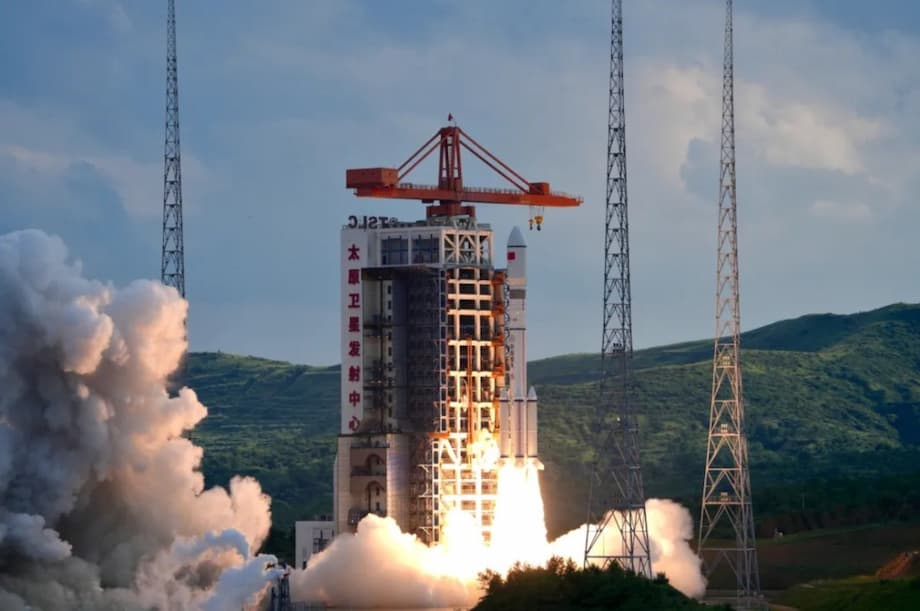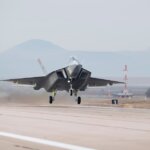China’s Latest Guowang Launch: Expanding a Sovereign Space Internet
China has taken another step in its ambitious quest to build a sovereign space-based internet, launching a new batch of Guowang satellites into low Earth orbit (LEO) on Sunday. The deployment, part of a broader megaconstellation project, aims to provide high-speed broadband across China and eventually the globe, positioning the country as a major player in the rapidly intensifying race for satellite internet dominance.
- China’s Latest Guowang Launch: Expanding a Sovereign Space Internet
- What Is the Guowang Constellation?
- The Strategic Importance of Satellite Megaconstellations
- Technical and Logistical Challenges
- Guowang’s Broader Implications: Economic, Political, and Military
- How Does Guowang Fit Into the Global Satellite Internet Race?
- Looking Ahead: Can China Close the Gap?
- In Summary
The Guowang constellation, meaning “national network,” is China’s answer to SpaceX’s Starlink and other Western satellite internet projects. With plans for nearly 13,000 satellites, the project is one of the most ambitious in the world, promising to transform communications, national security, and economic development both domestically and internationally.
What Is the Guowang Constellation?
The Guowang project is a state-sponsored initiative to create a vast network of LEO satellites that can deliver broadband internet to even the most remote corners of China and, potentially, to users worldwide. The constellation is being developed by China SatNet, a state-owned enterprise established in 2021 to consolidate and accelerate China’s efforts in space-based telecommunications. The project is supported by major aerospace and telecommunications companies, including the China Aerospace Science and Technology Corporation (CASC) and the China Aerospace Science and Industry Corporation (CASIC).
Guowang’s design calls for 12,992 satellites, surpassing the number authorized for Starlink. These satellites will operate at various altitudes, from 500–600 kilometers to over 1,100 kilometers above Earth, and will serve a range of functions beyond broadband, including laser communications, remote sensing, navigation, and meteorological research. The constellation is expected to provide intersatellite connectivity, reducing reliance on ground stations and enabling persistent coverage over key regions.
How Does Guowang Compare to Starlink?
While Guowang is often compared to SpaceX’s Starlink, there are notable differences in design and deployment. Guowang satellites are larger and heavier than their Starlink counterparts and are arranged inside launch vehicles using a unique double-decker layout. According to the China Academy of Launch Vehicle Technology (CALT), this arrangement optimizes the use of space within the rocket, allowing for more efficient launches. The deployment process is also distinctive, with satellites released in two separate groups and the upper stage of the rocket making precise adjustments to minimize collision risks.
In contrast, Starlink satellites are typically stacked vertically and released simultaneously using a spring-loaded mechanism. Starlink’s use of reusable Falcon 9 rockets has enabled a much faster launch cadence, a key factor in its rapid expansion.
The Strategic Importance of Satellite Megaconstellations
Low Earth orbit satellite constellations like Guowang and Starlink are reshaping the global communications landscape. They offer high-speed, low-latency internet access to areas underserved by traditional infrastructure, bridging the digital divide and enabling new economic opportunities. But their significance goes far beyond civilian applications.
For China, Guowang is a strategic asset. The constellation is designed to support not only civilian broadband but also military communications, remote sensing, navigation, and information security. Reports suggest that Guowang satellites have been tested in integration with Chinese Coast Guard vessels and missile systems near Taiwan, highlighting their potential role in national defense and regional security.
Globally, the race to deploy satellite internet constellations has become a new arena for technological and geopolitical competition. The United States, through SpaceX and other companies, has established a commanding lead, with Starlink already operating thousands of satellites and providing service in dozens of countries. Amazon’s Project Kuiper and Europe’s Eutelsat OneWeb are also building out their own networks. China’s Guowang and Qianfan constellations represent a concerted effort to catch up and ensure that the country is not dependent on foreign-controlled infrastructure.
Why Is China Racing to Build Its Own Network?
China’s leadership sees space-based internet as critical to national security, technological independence, and economic growth. President Xi Jinping has called for accelerated development of space-based communications, especially in light of Starlink’s demonstrated utility in conflict zones such as Ukraine. The People’s Liberation Army (PLA) has created a new Information Support Force to enhance digital infrastructure in space and prepare countermeasures against foreign constellations.
Guowang is also part of China’s broader strategy to export technology and build influence in developing nations. By offering an alternative to Starlink, China hopes to win contracts and partnerships in countries wary of relying on U.S.-controlled networks, using satellite internet as a tool of economic diplomacy.
Technical and Logistical Challenges
Despite its ambitions, China faces significant hurdles in deploying the Guowang constellation. As of July 2025, only about 40 Guowang satellites have been launched, far short of the thousands needed to achieve global coverage. The slow pace is due in part to limitations in China’s launch capabilities. Unlike SpaceX, which uses reusable Falcon 9 rockets, China relies on single-use Long March rockets, which are more expensive and have longer turnaround times.
Experts note that to meet International Telecommunication Union (ITU) deadlines and retain frequency rights, China must have 10 percent of its registered satellites operational by 2026 and half by 2032. This means ramping up launch rates dramatically, developing new reusable rockets, and optimizing ground infrastructure. The current reliance on various Long March series rockets, including the 6A, 8A, and 5B, indicates a diversified but still limited launch strategy.
Manufacturing satellites at scale is another challenge. The complexity of building, testing, and deploying thousands of advanced satellites requires massive investment, streamlined production lines, and robust quality control. Technical setbacks, such as failed launches or satellites not reaching their intended orbits, can further delay progress.
Space Debris and Orbital Crowding
The deployment of large satellite constellations raises concerns about orbital crowding and space debris. With thousands of satellites planned by multiple countries and companies, the risk of collisions and the creation of debris fields increases. International agencies are under pressure to develop new guidelines and coordination mechanisms, but the opacity of state-backed projects like Guowang complicates global efforts to manage these risks.
Guowang’s Broader Implications: Economic, Political, and Military
The successful deployment of Guowang would have far-reaching implications for China and the world. Domestically, it could revolutionize internet access in rural and remote areas, drive economic growth, and support the development of smart cities, autonomous vehicles, and advanced manufacturing. For the Chinese government, it represents a leap forward in technological self-sufficiency and a hedge against reliance on Western infrastructure.
Internationally, Guowang is a tool of soft power and economic diplomacy. By offering satellite internet services to countries in Africa, Asia, and Latin America, China can build alliances, export technology, and challenge U.S. dominance in global communications. The constellation also has clear military applications, enhancing China’s ability to conduct precision strikes, provide persistent surveillance, and support operations in contested regions such as the South China Sea and Taiwan Strait.
However, the project’s success is far from guaranteed. The slow pace of deployment, technical challenges, and competition from established players like Starlink and OneWeb mean that China must overcome significant obstacles to realize its vision.
How Does Guowang Fit Into the Global Satellite Internet Race?
The global race for satellite internet is heating up. SpaceX’s Starlink leads the field, with over 8,000 satellites in orbit and a proven track record of rapid deployment and service delivery. Amazon’s Project Kuiper and Europe’s Eutelsat OneWeb are also expanding, though at a slower pace. China’s Guowang and Qianfan constellations are the most ambitious challengers, but both have struggled with delays, technical setbacks, and launch bottlenecks.
One of the key differentiators is launch technology. SpaceX’s reusable rockets have enabled a high launch cadence and lower costs, giving Starlink a decisive advantage. China is working to develop its own reusable launch vehicles, such as the Long March 8R and commercial rockets like Zhuque-3 and Tianlong-3, but these are still in the testing phase. Until China can match SpaceX’s launch efficiency, catching up will remain a formidable challenge.
Another factor is international partnerships and market access. Starlink has already signed agreements to provide internet in dozens of countries, while Chinese companies are negotiating with governments in Asia, Africa, and South America. The outcome of these negotiations will shape the future of global communications and the balance of power in space.
Looking Ahead: Can China Close the Gap?
Despite the challenges, experts caution against underestimating China’s capacity for rapid technological advancement. Chinese satellite launches tend to accelerate in the second half of the year, and a breakthrough in reusable rocket technology could dramatically change the landscape. The government’s commitment to space as a strategic priority, combined with growing investment and a maturing commercial space sector, suggests that China will continue to push forward aggressively.
As Andrew Jones, a journalist who has tracked Chinese space launches for a decade, notes, “They have to work out the kinks.” If China can overcome its current bottlenecks, Guowang could become a major force in global communications, challenging Starlink’s dominance and reshaping the future of the internet.
In Summary
- China launched a new batch of Guowang satellites, expanding its ambitious LEO broadband constellation.
- The Guowang project aims to deploy nearly 13,000 satellites, rivaling SpaceX’s Starlink and other Western networks.
- Guowang satellites are larger and heavier than Starlink’s, with unique deployment methods and multi-mission capabilities.
- China faces significant challenges, including slow launch rates, lack of reusable rockets, and technical setbacks.
- The constellation is strategically important for China’s national security, economic growth, and international influence.
- Space debris and orbital crowding are growing concerns as more megaconstellations are deployed.
- China’s ability to catch up with Starlink depends on overcoming technological and logistical hurdles, especially in launch technology.
- The global race for satellite internet is intensifying, with major implications for communications, security, and geopolitics.




